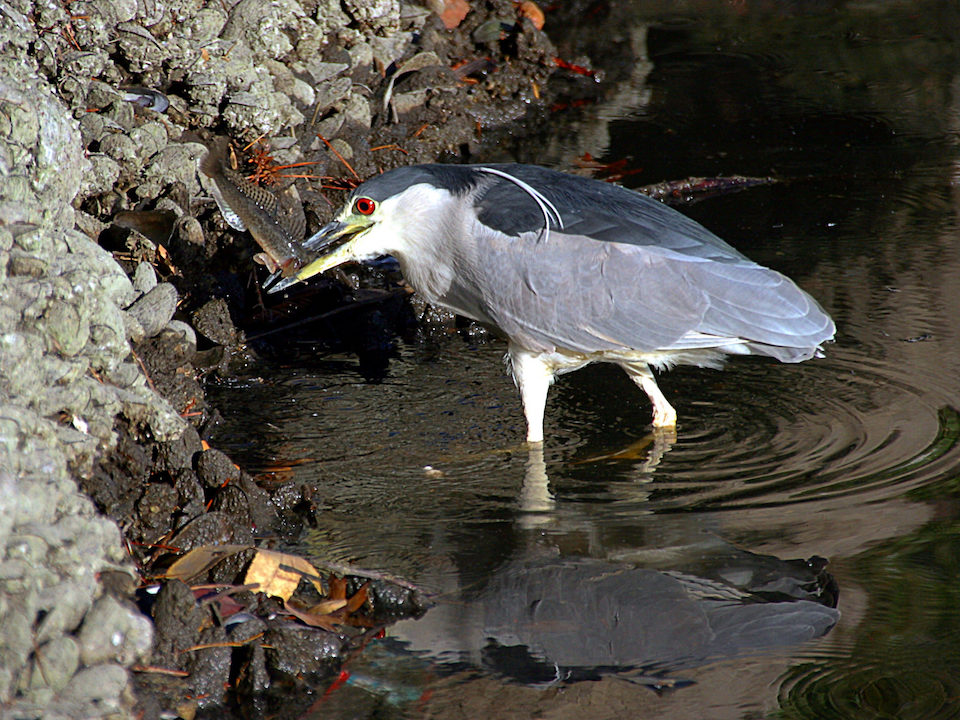
Oakland's black-crowned night herons aren't as numerous as pigeons or as aggressive as seagulls, but these medium-sized water birds are dedicated city-dwellers. Ambush predators by nature, these scarlet-eyed creatures might spear a frog and eat the end of a discarded burrito in the same week.
Night herons can be seen roosting on the beams of overpasses, hanging out in alleys downtown, and nesting in trees along 12th, 13th, and 14th streets in Chinatown and near Lake Merritt.

These birds have lived in Oakland since before the city existed, which may be why they've chosen to create a rookery (a dense collection of nests) in a well-populated area. Black-crowned night herons often hunt at Lake Merritt, but they don't mind a short commute downtown after a meal.
Nycticorax nycticorax are distributed throughout the Western Hemisphere, Africa, and Asia. In most of the world, they live near water and are are most active at night, but Oakland's herons can be seen at all times of day and nest wherever they please.
“There are some intangibles we just don’t understand about why particularly they choose their habitat,” said Max Tarjan, waterbird program director at the San Francisco Bay Bird Observatory.

Tarjan has at least one theory on why the birds chose their unusual roost downtown; night herons are social birds. One nesting pair attracts another, so the larger a rookery becomes, the more gravitational pull it exerts.
Just ask the Oaklander who started a 2013 Reddit thread titled, "Why is this car covered in bird poop?"
A few early colonizers could have nested in the trees, attracting more and more of their fellow herons to join, Tarjan said. “They are definitely behaving a lot differently than they would otherwise if they weren’t in an urban habitat,” Tarjan said.

The SFBBO has monitored the growing downtown Oakland rookery since the spring of 2015. In 2016, the organization counted 41 heron nests, 107 breeding adults and 54 young, but snowy egrets have also recently begun nesting in the night heron colony.
“There are fewer snowy egrets,” said Tarjan. “Just 26 last year, but they produced 48 chicks.”
Not all of heron or egret chicks will make it to adulthood, since many will fall from the nest, something that's "part of the natural process," said Tarjan. He advised people who find fallen chicks to contact an animal rehab center such as International Bird Rescue.
Herons have their young in May and June, so "they’re just about at their peak,” said Tarjan.









